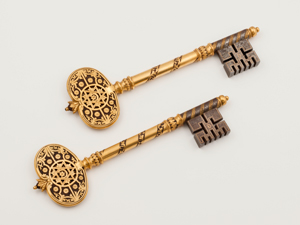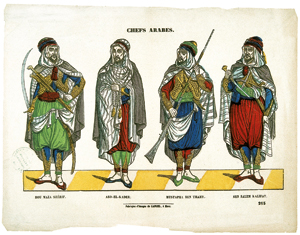|
Though nominally part of the Ottoman Empire for 300 years, the Algiers Regency held all the characteristics of a sovereign state when the French fleet landed at Sidi Ferruch in 1830.
|
 Clés d'honneur de la ville d'Alger Clés d'honneur de la ville d'Alger© Paris - Musée de l'Armée, Dist. RMN-GP / Christophe Chavan |
 Chefs arabes, anonyme Chefs arabes, anonyme© Musée de l’image d’Epinal |

